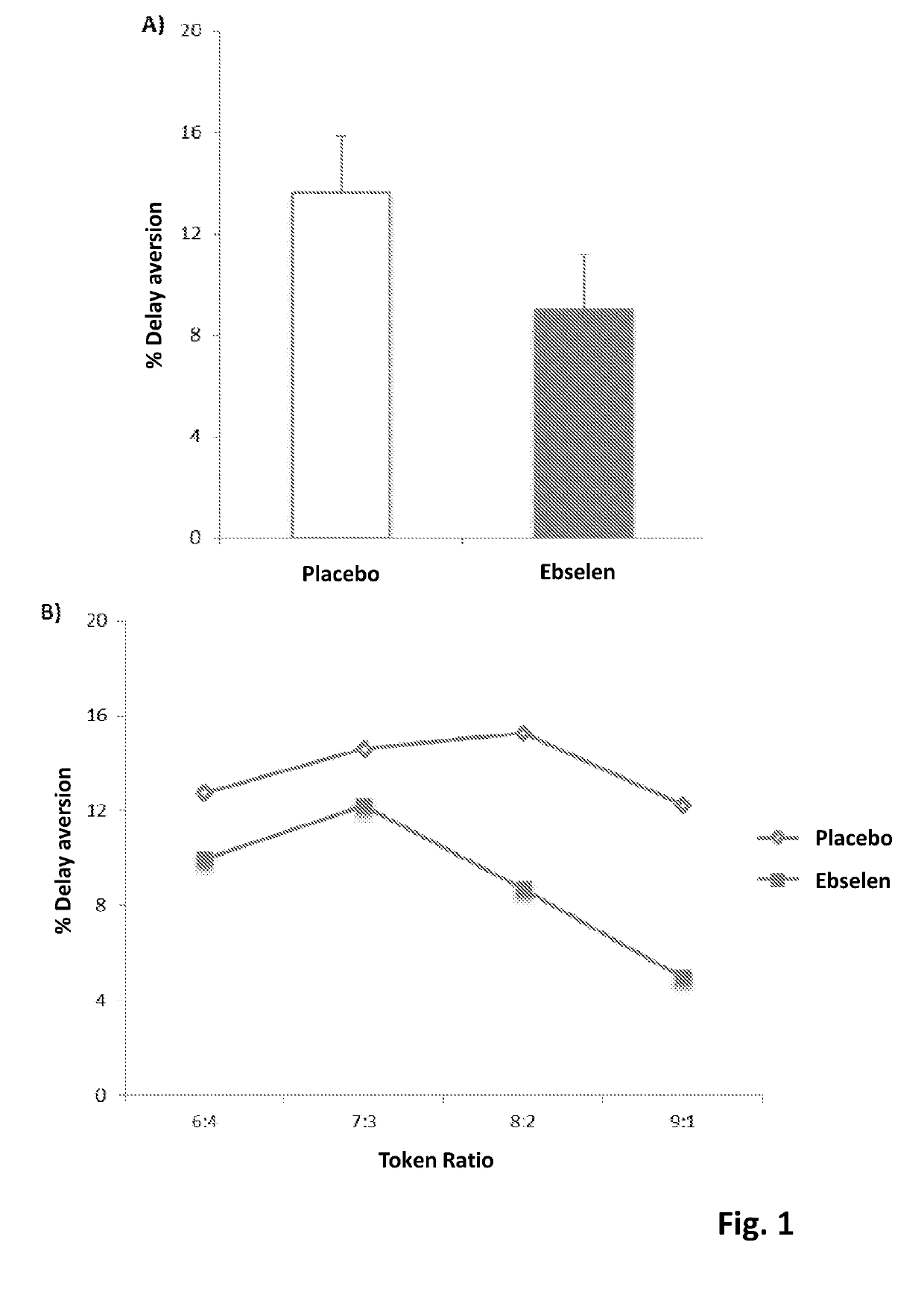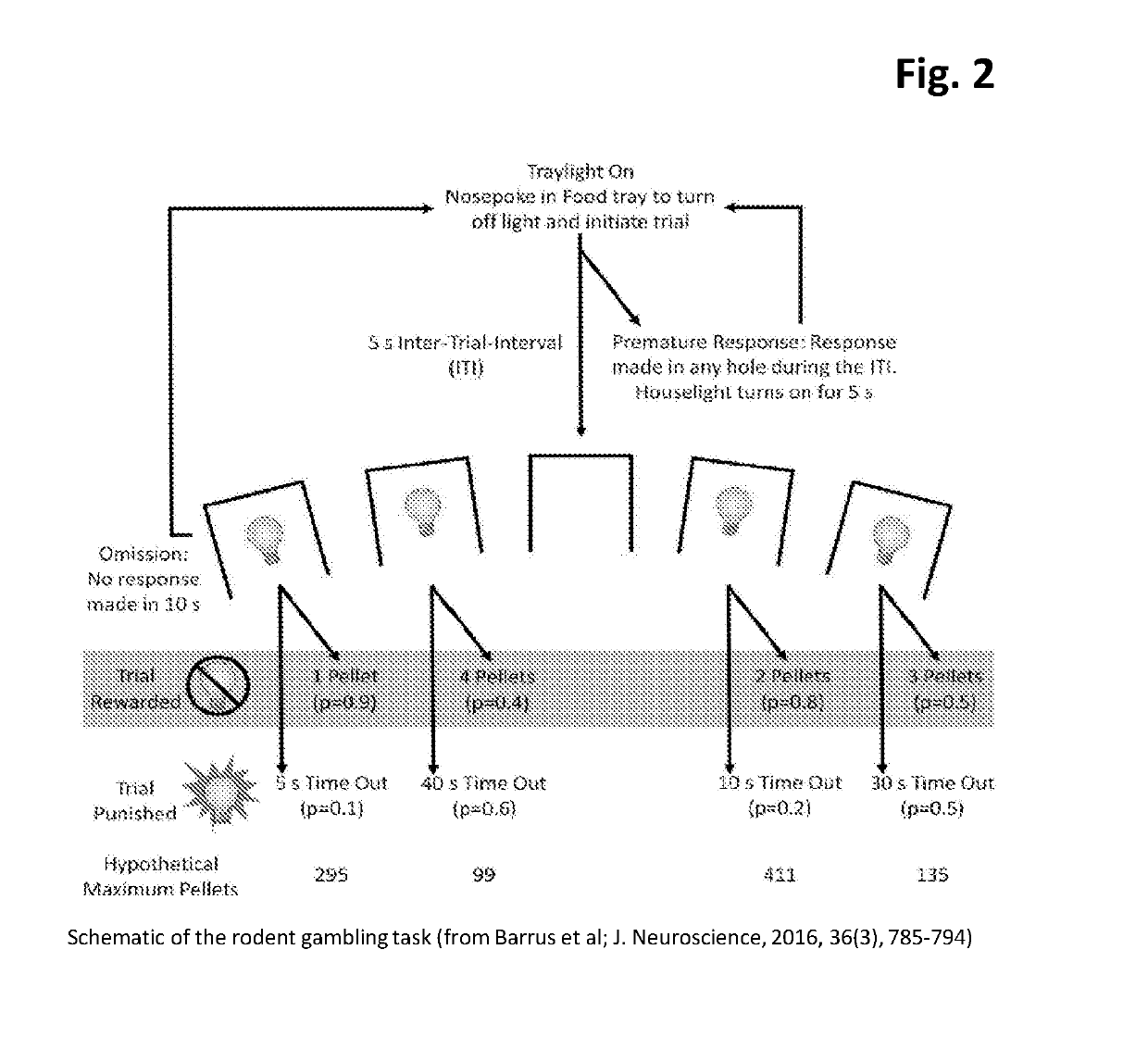Treatment of impulsivity-related disorders
a technology for impulsivity and disorders, applied in the field of treatment of impulsivity and disorders, can solve the problems of inconvenient and expensive blood level monitoring, lithium suffers from toxicity, and can only be toxic twice, so as to control or treat impulsivity control disorders
- Summary
- Abstract
- Description
- Claims
- Application Information
AI Technical Summary
Benefits of technology
Problems solved by technology
Method used
Image
Examples
experiment 1
s
[0081]Ethical approval for the study was obtained from the National Research Ethics Service Committee (NRES), South-Central Oxford, UK.
[0082]Twenty healthy participants (7 females, 13 males; mean age 25.1 years, range 20-38 years; mean BMI 22.7 kg / m2, range 18.7-30.0 kg / m2) were included in the study after giving full informed written consent.
[0083]Exclusion criteria included a history of any DSM-5 Axis I psychiatric disorder (determined using the Standard Clinical Interview for Diagnostic and Statistical Manual for Mental Health Disorders), significant current medical condition, current regular medication (apart from the contraceptive pill), pregnancy or lactation, heavy smoking (defined as more than 5 cigarettes per day) and having taken part in another study involving an investigational drug within the previous 3 months. Participants were asked to maintain stable exercise and diet as well as refrain from alcohol during study participation.
[0084]Ebselen capsules and identical mat...
experiment 2
s
[0101]Testing was carried out in Vancouver (Canada) using rats (males; Long Evans from Charles River) which were given at least two weeks to acclimatise to the animal facility. They were housed in pairs on a 12 hour reverse light-dark cycle (lights off at 7 am). In the second week of acclimatisation, rats were handled briefly each day. Food was then restricted and progressively decreased to 14 g / rat / day over the next week. For each task, there was then a habituation session to the operant boxes before training began.
[0102]Measurement of 5-HT2A function was carried out in Oxford (UK) using rats (males, Hooded Lister from Harlan) housed in fours on a 12 hour light-dark cycle (lights on at 7 am). In the second week of acclimatisation, rats were handled briefly each day.
[0103]All experiments were approved by local ethical committees and followed national guidelines for animal welfare (Canadian Council of Animal Care, or the UK Animals (Scientific Procedures) Act 1986).
[0104]Ebselen, co...
PUM
| Property | Measurement | Unit |
|---|---|---|
| time | aaaaa | aaaaa |
| time | aaaaa | aaaaa |
| therapeutic concentration | aaaaa | aaaaa |
Abstract
Description
Claims
Application Information
 Login to View More
Login to View More - R&D
- Intellectual Property
- Life Sciences
- Materials
- Tech Scout
- Unparalleled Data Quality
- Higher Quality Content
- 60% Fewer Hallucinations
Browse by: Latest US Patents, China's latest patents, Technical Efficacy Thesaurus, Application Domain, Technology Topic, Popular Technical Reports.
© 2025 PatSnap. All rights reserved.Legal|Privacy policy|Modern Slavery Act Transparency Statement|Sitemap|About US| Contact US: help@patsnap.com



